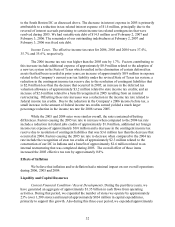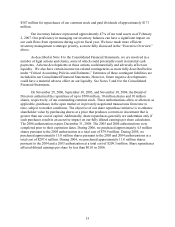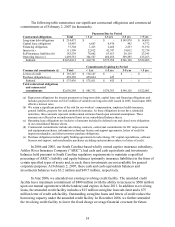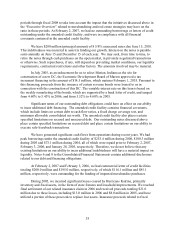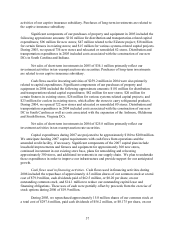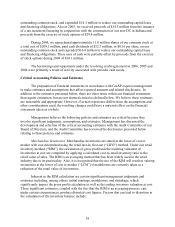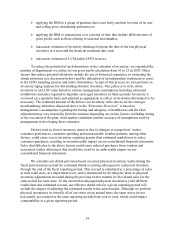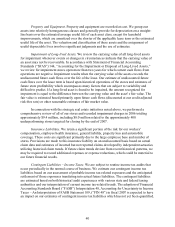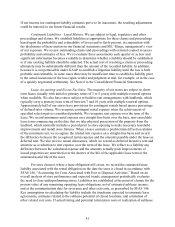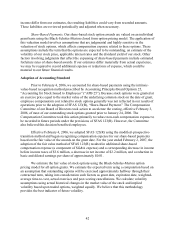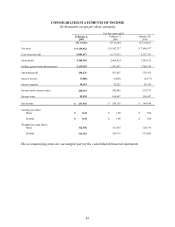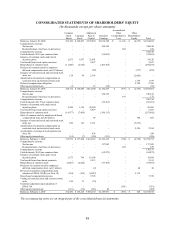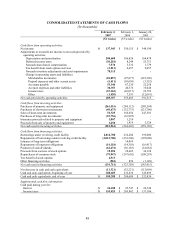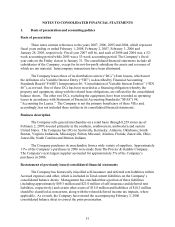Dollar General 2006 Annual Report Download - page 43
Download and view the complete annual report
Please find page 43 of the 2006 Dollar General annual report below. You can navigate through the pages in the report by either clicking on the pages listed below, or by using the keyword search tool below to find specific information within the annual report.If our income tax contingent liability estimates prove to be inaccurate, the resulting adjustments
could be material to our future financial results.
Contingent Liabilities - Legal Matters. We are subject to legal, regulatory and other
proceedings and claims. We establish liabilities as appropriate for these claims and proceedings
based upon the probability and estimability of losses and to fairly present, in conjunction with
the disclosures of these matters in our financial statements and SEC filings, management’ s view
of our exposure. We review outstanding claims and proceedings with external counsel to assess
probability and estimates of loss. We re-evaluate these assessments each quarter or as new and
significant information becomes available to determine whether a liability should be established
or if any existing liability should be adjusted. The actual cost of resolving a claim or proceeding
ultimately may be substantially different than the amount of the recorded liability. In addition,
because it is not permissible under GAAP to establish a litigation liability until the loss is both
probable and estimable, in some cases there may be insufficient time to establish a liability prior
to the actual incurrence of the loss (upon verdict and judgment at trial, for example, or in the case
of a quickly negotiated settlement). See Note 8 to the Consolidated Financial Statements.
Lease Accounting and Excess Facilities. The majority of our stores are subject to short-
term leases (usually with initial or primary terms of 3 to 5 years) with multiple renewal options
when available. We also have stores subject to build-to-suit arrangements with landlords, which
typically carry a primary lease term of between 7 and 10 years with multiple renewal options.
Approximately half of our stores have provisions for contingent rentals based upon a percentage
of defined sales volume. We recognize contingent rental expense when the achievement of
specified sales targets is considered probable. We recognize rent expense over the term of the
lease. We record minimum rental expense on a straight-line basis over the base, non-cancelable
lease term commencing on the date that we take physical possession of the property from the
landlord, which normally includes a period prior to store opening to make necessary leasehold
improvements and install store fixtures. When a lease contains a predetermined fixed escalation
of the minimum rent, we recognize the related rent expense on a straight-line basis and record
the difference between the recognized rental expense and the amounts payable under the lease as
deferred rent. We also receive tenant allowances, which we record as deferred incentive rent and
amortize as a reduction to rent expense over the term of the lease. We reflect as a liability any
difference between the calculated expense and the amounts actually paid. Improvements of
leased properties are amortized over the shorter of the life of the applicable lease term or the
estimated useful life of the asset.
For store closures where a lease obligation still exists, we record the estimated future
liability associated with the rental obligation on the date the store is closed in accordance with
SFAS 146, “Accounting for Costs Associated with Exit or Disposal Activities.” Based on an
overall analysis of store performance and expected trends, management periodically evaluates
the need to close underperforming stores. Liabilities are established at the point of closure for the
present value of any remaining operating lease obligations, net of estimated sublease income,
and at the communication date for severance and other exit costs, as prescribed by SFAS 146.
Key assumptions in calculating the liability include the timeframe expected to terminate lease
agreements, estimates related to the sublease potential of closed locations, and estimation of
other related exit costs. If actual timing and potential termination costs or realization of sublease
41



